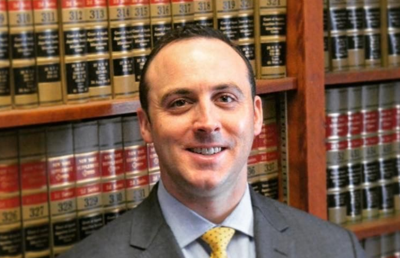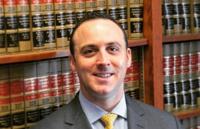
Brady
BUFFALO, N.Y. - For more than half a century, Kensington Parkway has slashed through a historically African-American neighborhood in Buffalo, N.Y., a below-grade, six-lane highway where there once was an elegant park designed by Frederick Law Olmstead, the architect of New York City’s Central Park.
All that was supposed to change when the state proposed a $1 billion plan to place a concrete cap on the expressway and build a new park on top of it. But local groups have blocked the project from proceeding, citing the very laws that were passed to cut down on pollution and encourage environmentally friendly development.
In February of this year, Erie County judge Emilio Colaiacovo ordered a halt to construction, siding with the Western New York Youth Climate Council and others who said the project would increase greenhouse gas emissions and harm nearby residents. One claim was the project would violate the “Green Amendment” added to the New York state constitution in 2021, which says, “each person shall have a right to clean air and water, and a healthful environment.”
“On the surface level, it would seem like an improvement,” said attorney Dan Brady of Hagerty & Brady, who represents the Youth Climate Council and other groups challenging the parkway project. But “once you dug into the environmental assessment, it revealed there would not be much of a difference at all in terms of air quality. At the end of the tunnel, those residents would be significantly worse off.”
The state declined to comment but has told the court that delay will cost it $400,000 a month, plus the cost of preparing a comprehensive environmental impact study ordered by the judge, yet decided not to pursue an appeal. Brady said his clients were justified in using environmental laws to block the project, in part because the equipment used to build it would produce global warming gases in excess of normal traffic flow.
Kensington Parkway is just one of a number of seemingly environmentally friendly projects facing delays or outright cancellation due to litigation by groups that cite environmental laws to support their cases. Legal scholars J.B. Ruhl of Vanderbilt Law School and James Salzman of UCLA Law dubbed it the “Greens’ Dilemma” in an influential 2023 article.
“It is naïve to think that the legal tools used in the past to fight pipelines and power plants will be put aside simply because the new agenda is climate-friendly,” they wrote. “The existing project siting and environmental protection regulatory regimes do not hand out a `green pass’ to infrastructure projects that promote desirable environmental outcomes.”
To bolster their argument against the Kensington Parkway project, plaintiffs borrowed an increasingly popular strategy on the climate left: Bring in the kids. Buffalo high school student Felix Hutton said he has “experienced mental duress in relation to climate change as I was constantly fearful for my future.” A senior at the University of Buffalo, Valerie Juang, stated: “a sense of psychological safety is primarily rooted in the physical environment, so like many other youths, I have experienced climate anxiety."
Environmentalists used a similar tactic to win a landmark Green Amendment ruling in Montana that the state Supreme Court upheld in December 2024. In that case, the plaintiffs were minors who said a law prohibiting regulators from considering climate change when permitting oil and gas projects caused them angst.
In the Buffalo case, neither the plaintiffs nor the judge explained how CO2 emissions from a single construction project in upstate New York could have any detectable effect on global warming. Instead, the judge focused on arguments the state should have compiled a lengthy environmental impact statement before permitting the project, a step that typically gives opponents ample evidence to try and bring such projects to a halt.
When a coalition of electric companies proposed the AC Transmission project, the biggest transmission upgrade in 40 years to bring more green energy into the New York market, local residents sprang into action. The Concerned Citizens of Dover and Friends of the Great Swamp sued to block a substation they said would leach contaminated water nearby wetlands.
They claimed the project would violate New York’s Climate Leadership and Community Protection Act (CLCPA), which requires the state to slash CO2 emissions by 2050 but also extends protection to “disadvantaged communities” like Dover.
“I don’t want come off as Dover is anti-green energy,” Jill Fieldstein of Concerned Citizens said in a 2023 interview. “That’s not what is happening here.”
A state court judge in 2023 ordered the project halted until the city took a “hard look” at whether construction of the substation would pollute the wetlands. After a year of delay, it received a green light in 2024.
The South Fork Wind project off Long Island also endured years of legal challenges before finally starting operation last year. Residents of the wealthy Hamptons neighborhood sued to block electrical cables necessary to bring power ashore and claimed the state Bureau of Ocean Energy Management ignored the impact construction would have on the local environment.
“I used to enjoy Georgica Pond when sailing at least three days a week (weather permitting), swimming, and eating fresh fish and crabs caught from the pond,” complained Simon Kinsella. “Due to irreparable damage from construction that BOEM improperly allowed, I can no longer enjoy our local environment.”
A federal judge dismissed the last of the cases last September after multiple appeals including to the U.S. Supreme Court. Residents of Sleepy Hollow, another rich New York community, also lost their constitutional challenge to the 175-megawatt Flint Mine solar farm, after arguing the panels would leach dangerous chemicals into a nearby lake.
Now New York is fighting a Green Amendment lawsuit by Citizen Action and the Sierra Club, who claim the state is “stonewalling necessary climate action” by failing to implement the aggressive emissions goals outlined in CLCPA. Those include a $12 billion “cap-and-invest” plan where carbon emissions would be taxed with the money going toward renewable power projects.
The law says New York must cut greenhouse gas emissions to 15% of 1990 levels by 2050, a goal that would require wholesale changes in how electricity is generated, cars are fueled and people heat and cool their homes. Among other things, the state’s climate goals assume far greater housing density – a change that is sure to encounter stiff resistance from local residents – and massive arrays of solar farms that already are being challenged under the Green Amendment.
The state, in a May 7 response from Attorney General Letitia James, says plaintiffs “impermissibly seek to commandeer how the Department advances the Climate Act’s goals.”
“New York needs to get the transition right” to ensure that we “keep our state affordable for families,” the state says. “The Green Amendment does not, however, impose an affirmative mandate on the government to take action to ensure cleaner air, cleaner water, or a healthier environment.”







